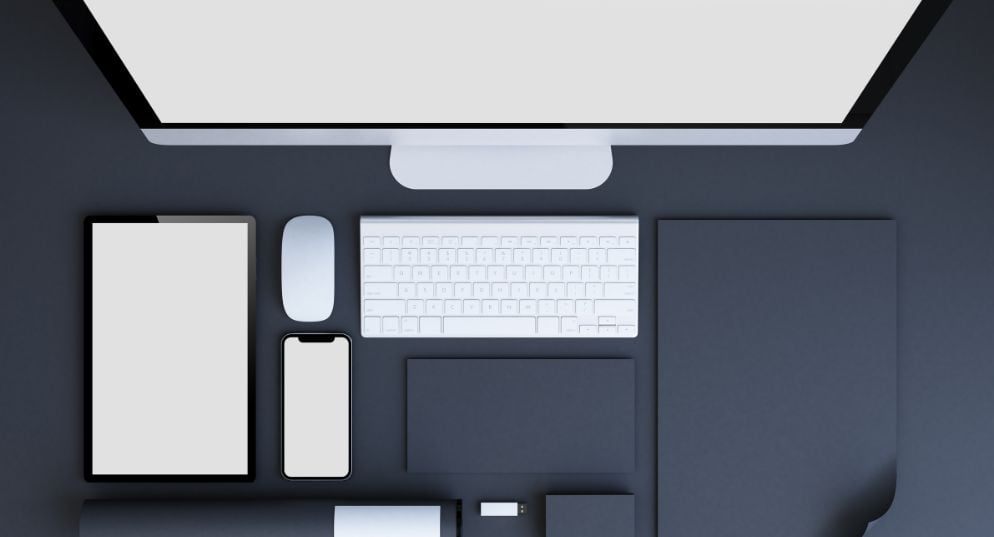HOW TO FIND THE RIGHT ADVERTISING MEDIA AND USE IT PURPOSEFULLY
When choosing the right advertising media, a wide variety of factors must be taken into account, whether strategically or in terms of design.
In this article:
- What is advertising media?
- How do I choose the right advertising media
- Design tipps
- Usage in a targeted manner
- Our final advice
- Conclusion
- FAQ
The most important information summarized
- The choice and design of advertising media depend on your target audience.
- The combination of analog and digital advertising methods is purposeful.
- Take customer needs into account when communicating.
What is advertising media?
In connection with the term, one encounters the most diverse definitions and opinions. For many it’s the ballpoint pen or USB stick with a company’s logo, but here we talk about advertising articles or promotion products. “Advertising media” is a general term which describes all actions to convey an advertising message. Promotion products also fall under this category but other actions are also part of this.
Overview of the most known advertising media:
- Promotion products such as ballpoint pens or flyers
- Ads (digital or print)
- Posters
- Digital signage
- Banners
- TV spots
- Content (Blog, podcasts)

How do I choose the right advertising media?
The decision depends on many different factors. During the selection of possibilities it’s not that easy to choose the right method but even more important is a good strategy to avoid bad investments.
The target audience is the most important factor
In marketing, the focus on one’s own target group is the core criterion for choosing the right advertising media. For example, it doesn’t make sense to choose promotion products such as ballpoint pens when potential clients primarily use digital media and barely have personal contact to a business. On the other hand, crafts, for example, take advantage of promotion products because clients show up at the location.
Through digital ads the opportunity of communicating messages in different ways is given. Use this diversity and speak to all of your interested parties and clients. In the end, a company has many different target groups and you should reach out to all of them as well as considering their different needs. Don’t forget: The benefit does not depend on a product or service but on the needs of the customers.
But it’s not only about choosing the right medium but also how you speak to your target group. Young people wish for different advertising than someone who is in his fifties and that should be clear when communicating with your target audience. Younger people are more likely to consider how innovative or timeless the advantages of a product are communicated, older people on the other hand care more about safety and price.
However, there are also communication channels through which all target groups are addressed. One example for this is digital signage – the greater flexibility allows content to be targeted precisely at different groups of people and this is not just done by manual means, because by using artificial intelligence, sensors can recognize the person in front of the digital screen and target advertising. This flexibility gives companies greater leeway in strategy development and the budget is also used more purposefully as a result.
The marketing strategy determines the objectives
A strategy determines the framework and sets the direction. Research, identification of customer needs, setting of deadlines and analyses are the foundation for choosing the best advertising media. If the goal is “customer loyalty”, promotional products are a proven way of expressing appreciation to customers. However, if the focus is on acquiring new customers, promotional items are not helpful; instead, advertisements with discount promotions or giveaways are.
The strategy also defines the timing of the advertising. Many companies finance their ideas via crowdfunding campaigns with a predefined goal and deadline. Here it would be fatal to focus exclusively on the goal but not inform anyone about the timing so that the investment is also made within the deadline.
Ideally, choose advertising materials that fit both strategically and in terms of timing. It doesn’t make sense to hand out flyers for a company anniversary two days beforehand, but it’s just as useless to run ads promoting an anniversary in Munich but addressing a target group from Berlin.
The budget question
Companies have a specific budget for their marketing and that is to consider because the target group depends on that. Some businesses create a few thousand euros of marketing costs each month and they use the advantages of outsourcing. This approach is barely recommendable for freelancers or small start ups. They don’t have the opportunities to reach as many businesses as possible with their limited budget.
The available budget determines the type and scope of advertising media as well as the pursued goal. Little businesses with a 1000 € marketing budget per month rather focus on one goal (e. g. expanding reach), big companies with more than 10.000 € marketing budget on the other hand have the possibility to execute a full marketing strategy with lead generation.
Just take a look at your target group again – if you, for example, sell luxury products, your customers will expect more than a pen or a lighter. In determining the available budget not only your business is involved but also your target group and their wishes.
Design Tipps
To communicate the emotions associated with advertising, using visual elements is necessary. But a nice presentation isn’t enough to use the strengths of advertising.
Consider your corporate identity
Uniformity is essential for the identification of a company and the recognition value for the target group. Don’t use random colors during the designing process but remain true to the corporate identity created. The colors of a promotion product don’t necessarily have to match with the colors of a website, but depending on format and media the colors should be alike. If you represent your website and your logo in a combination of black and green for example, it’s not good to design digital ads in, for instance, yellow.
An unified look also means to use key elements. The logo, or at least the lettering, must be on advertising media to create recognition value. Likewise, the unique selling proposition or a slogan does well to stand out decisively from competitors. Visual elements (placing pictures, form elements etc.) are welcome to differ in order to offer variety but don’t deviate too much from your color scheme.

Corporate identity: The fundament to create a brand with recognition value | Source: canva.com
Communicate a positive feeling
Besides a strong message, advertising is defined by a good strategy. What matters the most is how clients view your advertising. Use your strategy to awaken positive feelings of hope or excitement. Depending on your target group, you can use humor too. In order to strengthen the good impression we suggest to use positive formulations of sentences – nobody likes to read negative words such as “problem”, but rather positive alternatives like “challenge”. You are not necessarily aware of such little details but they have an influence on the overall impression.
If possible, use advertising media to speak to the senses of your target audience. A ballpoint pen should feel comfortable in the hands and create a “wow-effect” when looking at it. The reason why videos work so well as advertising media is because they speak to the human senses and visualizing helps to understand a message much better. Use these advantages for your business.
In terms of visualization, nothing can beat digital billboards. In general, digital advertising is visually more appealing than print media because in the process of creation designers have more possibilities and displaying content on a screen is supported by effects which can’t be used for print media.
Article → What are use cases? Definition and examples
Check for completeness
In the first step, the purpose of advertising media is to support marketing. But strong messages and promises alone won’t help your target group when important information is missing. Take care that your contact data is deposited and that important information regarding prices, references or spectrum of services is not missing.
Also, don’t go into detail too much and focus on key information. The goal is to deliver important information as short and “straight to the point” as possible because the span of attention is short.
Here again, the advantages of digital advertising become apparent: For example, digital advertising screens can be set in such a way that the content played out changes by itself after a few seconds. This constant change of advertising messages keeps the viewer’s curiosity alive and makes addressing the target group more flexible.
Tailor content to the target group
Your target group is the key factor, the same applies to the design of advertising materials. There is no such thing as a consistent formula, instead the needs of your clients matter. Some place more value on safety, to others good conditions are more important. Exactly this is to consider when delivering an advertising message. Admittedly, it’s harder with promotion products such as lighters or ballpoint pens but it’s easier with advertising brochures to design content in a targeted manner.
What’s also important is to differ between B2B and B2C customers / clients. In B2C marketing, the main focus is to communicate emotions and customers expect lower prices. In B2B marketing on the other hand, innovation and objective facts / data which support the selling of a product or good primarily matter.
Make your target group understand: “You need to do this to contact us” – we’re referring to the Call-To-Action, that is, to perform an action. Many website owners regularly optimize their texts but still aren’t successful. The reason is not necessarily the bad findability or because something is wrong with the texts. Often it’s because the Call-To-Action is missing. Many businesses oversee that interests and customers want to be taken by the hand. The User experience is one of the most important criteria for successful usage of advertising media and especially through the progress of digitalization it becomes more relevant.
Consider the visual details
As already mentioned, visuals aren’t everything but under the line they are still important. Brochures don’t look good when pictures are pixelated or spacing from text to edge isn’t enough. Likewise, print mistakes, which are often caused by an incorrectly set color channel of a program, aren’t good either. Pictures are ideally in the vector format (to make sure they are not pixelated), the writing big enough and the spacing unified. You should also consider choosing the right format so that there are no difficulties in terms of size when printing.
Store your promotion products the right way
Promotion products such as brochures quickly accumulate dust, even more important is the right storage. Do not store promotional items openly in the basement or in damp areas, this will damage them and make them less attractive or even affect their function (e. g. lighters).

The targeted use
When it comes to certain promotional items, there are a few little things to consider that many overlook at first glance. It is not helpful to produce a large quantity of promotional items or blindly play out advertisements, because depending on the target group, there are various special features to consider.
The occasion matters
Especially in the B2B sector meetings and events are a common thing. To convince their business partners, you better give it all you got and use luxurious advertising materials. It’s better to invest a little bit more money to provide good quality. But don’t only consider the price, but also personal preferences and wishes of business partners.
Don’t be intrusive
Many people see advertising as intrusive or bothering. Respect the wishes of all of your customers and that some of them are just not interested in advertisement. That actually gives you the possibility to plan better for the future and to figure out who is actually interested in your advertising and who is not.
Our final advice
Take a look at your competitors and consider your experience. News regarding current trends does not always tell you the best methods for choosing advertising media because your own market research is still the most reliable source for information. Taking a look at your competitors promotes creativity and inspires for new ways to do things. Don’t copy content of other businesses but question their procedure during creation of advertising media to expand and improve your own strategy.
Conclusion
The right choice of advertising media is based on three factors: The wishes of the target group, the right use and a good design to arouse emotions. If you act without a strategy, you end up investing a lot of money and getting no results – so beforehand, always make an analysis that takes into account the wishes of the target audience and forecast the result.
FAQ
At the end of the article we answer frequently asked questions about promotional items.
Digital media provides businesses with higher flexibility. Ads can be optimized easily and changed in real time. Other than that, the success of digital media can be measured precisely.
In terms of digital advancement, objectively speaking, digital ads work best. However, the choice of the right advertising media depends on the target group and the company’s goal.
Contact us
Pictures: © Canva.com
